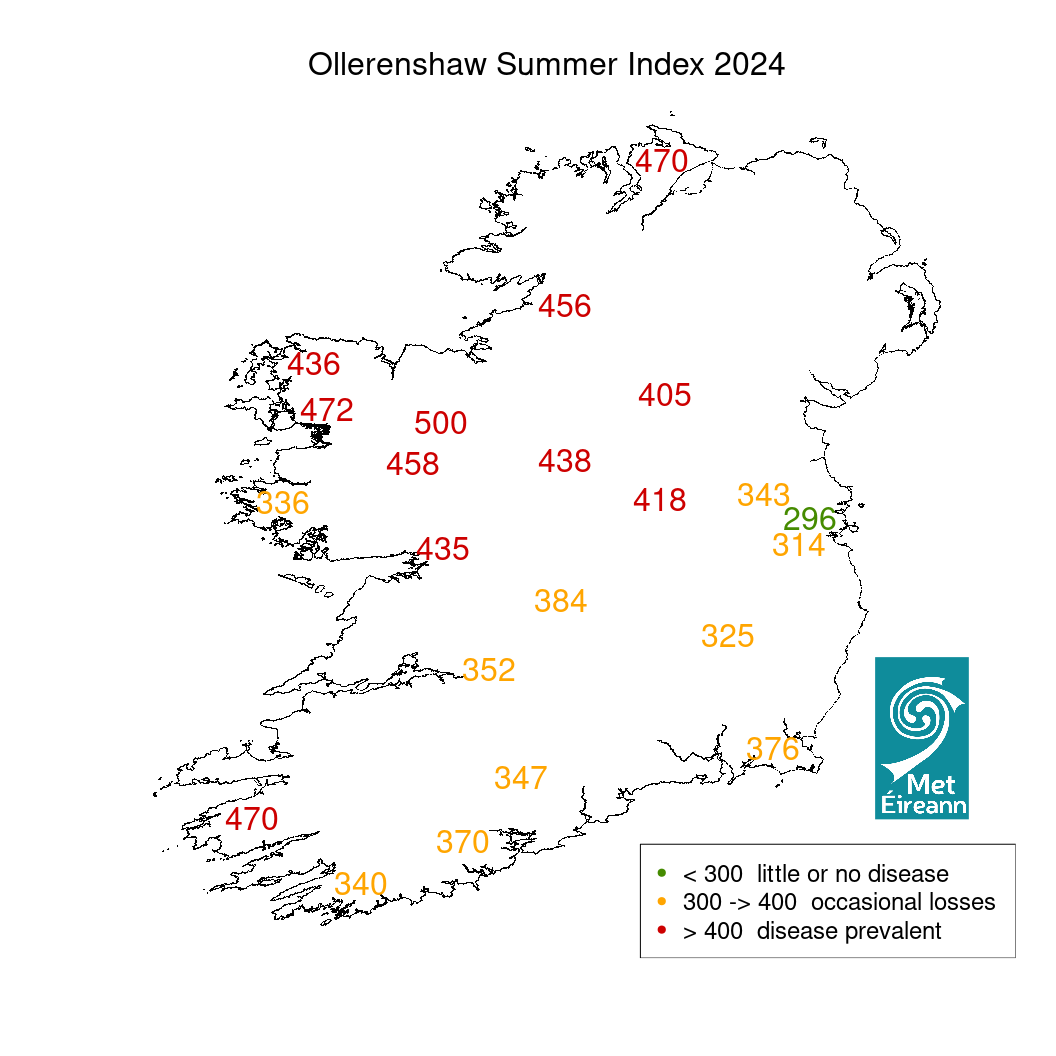Each year, the Department of Agriculture, Food and the Marine (DAFM) in collaboration with Met Éireann, UCD, Teagasc and Animal Health Ireland advises farmers of the predicted risk of disease caused by liver fluke (Fasciola hepatica) infection in livestock for the following winter. This year’s forecast is based on meteorological data gathered between May and October 2024 by Met Éireann.
The Disease Forecast Summary
Additional Information Source
Animal Health Ireland
The Beef HealthCheck programme, run in partnership with Meat Industry Ireland, collects and reports liver fluke information in cattle at slaughter from participating meat factories nationwide. While liver fluke levels have generally remained low for the last few years, this year has seen the first increase since the programme began in 2016. To date this year, abattoir examinations showed an average of 39% of herds with at least one animal with liver fluke damage. Active infection in one or more animals was seen in 17% of herds, compared to only 13% last year. Counties in the northwest of Ireland were more heavily affected, with 70-80% of herds in Sligo, Leitrim, Roscommon and Donegal reported to have signs of liver fluke at slaughter. The prevalence within herds is typically low depending on the farm with 7% of animals presented to slaughter showing signs of liver fluke damage and 2% of animals showing live liver fluke parasites. It is important for farmers to know whether liver fluke is present on their farm and to treat accordingly to avoid production losses. The Beef HealthCheck reports can be a useful tool to understand liver fluke challenge on-farm and are available to farmers on the ICBF website (beefhealthcheck.icbf.com) for those who have slaughtered animals at a participating factory since 2016. Visit Animal Health Ireland Beef HealthCheck Map for county level maps of liver fluke infection levels and further details on the programme.
Farm-to-Farm Variation
In order to assess the risk of liver fluke disease on any particular farm, various environmental factors, particularly climate, landform and soil type (especially whether soils are heavy or free-draining) must be taken into account. This is because the intermediate host of the parasite, which is a mud snail (Galba truncatula), occurs in soil that is slightly acidic and muddy. Thus, areas with rushes or wet patches (e.g., around gates, troughs) are particularly important with regard to liver fluke risk as they can help to maintain a population of the infective stage of the parasite. In addition, livestock owners should factor in prior liver fluke history on the farm as this is an important indicator of future disease risks.
Monitoring of Disease
Liver fluke infection tends to be chronic in cattle, resulting in ill-thrift and poor performance. Though chronic disease can also occur in sheep, infections may also result in more acute clinical signs, and sudden death in cases of heavy challenge.
Livestock owners should be vigilant for any signs of illness or ill-thrift in their animals and consult with their private veterinary practitioner (PVP) if they are concerned. In cases where the cause of death is not obvious, it is recommended that carcasses be referred by a PVP to the local Regional Veterinary Laboratory for post-mortem examination.
Abattoir records of livers of previously sold fattened stock is also a valuable source of information for livestock owners on the prevalence of liver fluke infection on their own farm or on the efficacy of their control programme.
Further details are available in the DAFM Liver Fluke November 2024 press release on Gov.ie
